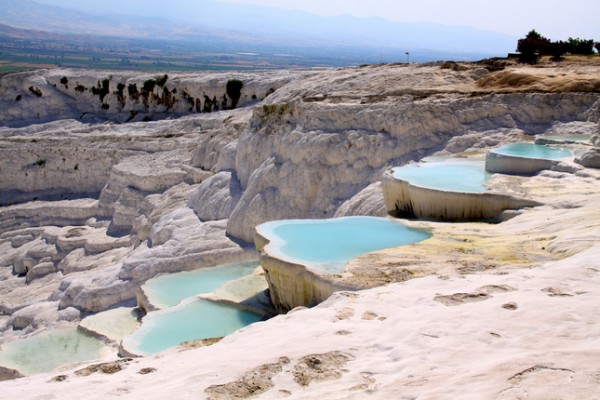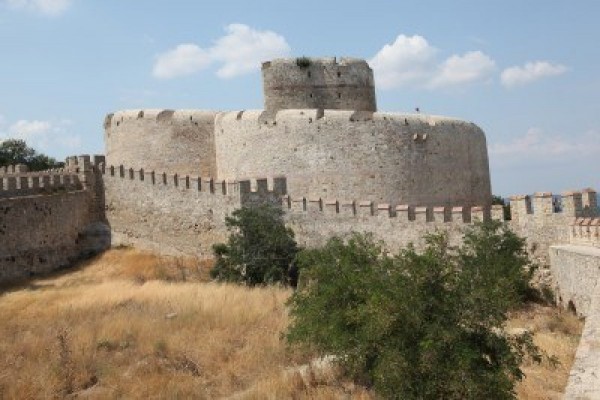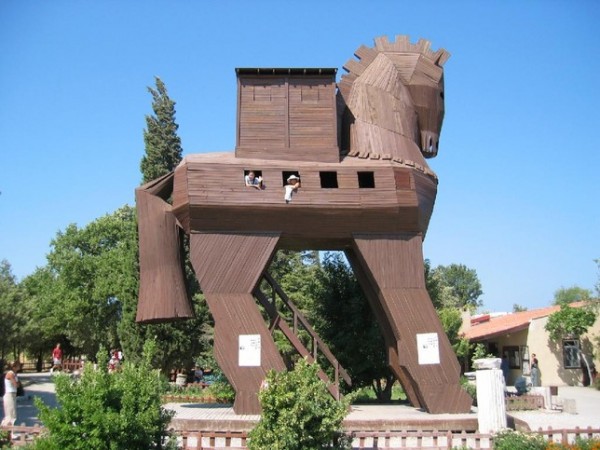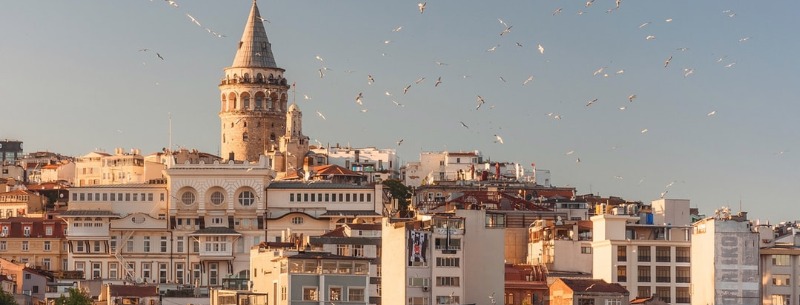2025 Turkey Visitors Guide
Turkey is a country with multiple identities, poised uneasily between East and West. The only NATO member in the Middle East region, the country has recently been accepted as a candidate for membership in the EU. Yet although in many respects Western, Turkey retains its frustrating differences, and its contradictions: mosques coexist with churches, and remnants of the Roman Empire crumble alongside ancient Hittite and Neolithic sites.
Politically, modern Turkey was a bold experiment, founded on the remaining Anatolian kernel of the Ottoman Empire and almost entirely the creation of a single man, Mustafa Kemal Atatürk. An explicitly secular republic, though one in which almost all of the inhabitants are at least nominally Muslim, it’s a vast country and incorporates large disparities in levels of development. But it’s an immensely rewarding place to travel, not least because of the people, whose reputation for friendliness and hospitality is richly deserved.
Western Turkey is the most visited and economically developed part of the country. Istanbul, straddling the Bosphorus straits and the Marmara coast, is a heady mix of the Oriental and state-of-the-art modern. It’s the country’s cultural and commercial center and also visibly the old imperial capital, and would take months of exploration to truly do it justice. Flanking Istanbul on opposite sides of the Sea of Marmara are the two earlier Ottoman capitals, Bursa and Edirne, and the former Byzantine capital of Iznik, with, just beyond, the World War I battlefields of the Dardanelles.
Aegean Coast
Moving south, on the Aegean Coast small country towns like Ayvalik are swathed in olive groves, while the area is littered with ancient sites like Assos, Bergama, and Ephesus, which have been a magnet for travelers since the eighteenth century. Beyond the functional but not unattractive city of Izmir, the Aegean coast is Turkey at its most developed, with large numbers of visitors drawn to resorts like Çesme, Bodrum, and Marmaris, beyond which the Mediterranean coast begins. There are remnants of the Lycians at Xanthos, and more resorts in Kas and Fethiye, along the aptly named “Turquoise Coast”.
Antalya
On the Mediterranean coast, Antalya is one of Turkey’s fastest-growing cities, a sprawling place that is the best starting point on the stretch towards the Syrian border, featuring extensive sands and archeological sites – most notably at Perge and Aspendos – until castle-topped Alanya, where the tourist numbers begin to diminish. It’s worth heading inland from here for the spectacular attractions of Cappadocia, with its famous rock churches, subterranean cities, and landscape studded with “fairy chimneys”, as well as the Selçuk architecture and dervish associations of Konya. Further north, Ankara, Turkey’s capital, is a planned city whose contrived Western feel gives some indication of the priorities of the modern Turkish Republic.
Best of Turkey
Ephesus
One of Turkey’s many unmissable sights, Ephesus is one of the largest and best-preserved ancient cities around the Mediterranean, where Saint Paul lived and proselytized from 51-53AD.
Yerebatan Saray, Istanbul
The “Sunken Palace” or Yerebatan Saray is a fifth-century cistern in Istanbul, brought to public attention by a Frenchman who saw locals pull fish from gaps in the pavement. You can now wander through its forest of underground columns, two of which are supported by beautiful marble Medusa heads.
Mezes
The core of Turkish cuisine, mezes are a great option for vegetarians – they are a bewildering array of delicious appetizers, including cold, baked aubergine with onion and tomato (imam bayildi), and stuffed vegetables (dolma).
Hamams
Nearly every Turkish town has a hamam, or Turkish bath, where you can get a steamy bath, vigorous massage, or a kese session (in which layers of dead skin are sloughed away with an abrasive glove). Try the four-hundred-year-old Cemberlitas Hammam in Istanbul.
Cappadocia
The great expanses of eroded volcanic rock at Cappadocia comprise an unforgettably dramatic and strange landscape. The rocks and valleys of “fairy chimneys” conceal ancient churches and dwellings, some still in use.
Ankara
The modern, European-style city of Ankara houses the prestigious Museum of Anatolian Civilizations, which chronicles Anatolian culture from the Late Stone Age to the Classical era.
Gelibolu Peninsula
The Gelibolu Peninsula, commonly known as Gallipoli, is scattered with World War I battlefields and cemeteries – grim memorials to the harebrained plan to land Allied troops (many from Australia and New Zealand) here in April 1915.
Bodrum
The Aegean town of Bodrum, with its white-washed houses and sub-tropical gardens, is an enjoyable resort, complete with a medieval castle, myriad boat trips, and lively nightlife.
Konya
Home of the mystic who founded the Mevlevi or “Whirling Dervish” sect, Konya is the center of Sufic mystical practice and teaching. The Whirling Dervishes make a spectacular public appearance at the Mevlâna Festival in December.
Pamukkale, Turkey
The Natural Healing Rock Pools
This is one for those oddity seekers. Picture a series of step-like structures, worn smooth over many millennia of soothing thermal waters. Technically speaking, there is no ocean nearby, however, it is still a site that would be worth your time to visit. As many of these natural formations seem to harbor, it has been deemed the site of a legendary tale; a young unmarried and ugly woman was so distraught by her lack of romantic opportunities that, decided to end her life, but as luck would have it, she jumped into the healing waters of Pamukkale and of course, the therapeutic waters transformed her into a beautiful goddess that caught the eye of a handsome lord, who fell in love with her right on the spot. Whether these mineral springs could perform the same magic for those who visit, has been up for debate, and regardless of miraculous cosmetic properties, people began using the waters as cure-alls. It’s been touted as its healing agent for those who suffer from arthritis, rheumatism, nerve damage, and eye/skin diseases.
Pamukkale probably is a unique place in the world. This beautiful spot is located in the Aegean region of Turkey, in the River Menderes valley. The surreal landscape of the terraced pools of Pamukkale actually makes this one of the most interesting tourist attractions in the world. The name Pamukkale means cotton castle, a name that the Turks have given to this place due to its unusual cascades. The warm and mineralized spring water from calcareous white steps creates a one-of-a-kind view of this area.

These thermal pools look like the white steps of a castle which surely is a unique scenery. It is believed that the unique formation of the landscape here was created by strong earthquakes that formed cracks that allowed the water to come to the surface. Layers of calcium carbonate deposited into the formations that can be admired today. Pamukkale is built on the ruins of the ancient Greco-Roman spa city of Hierapolis which means the Holy City. Consequently, this area has a special significance for locals. In the ancient city of Hierapolis, visitors can still admire beautiful temples and baths.
Besides being popular for the amazing views and the unusual landscape, Pamukkale is also known for the curative properties of its waters. The warm waters are perfect for the skin but are also effective in the cure of many diseases. Locals tell the legend of a young girl who apparently was so ugly that no one wanted to marry her. The legend says that this girl wanted to commit suicide, jumping off the travertine. The girl fell into a natural pool of Pamukkale, which not only saved her life but turned her into a beautiful lady. When the Lord of Denizli saw her, he fell in love and the two married.
Many scientific researchers prove that this water has certain medicinal benefits. Studies demonstrated that these waters help in conditions such as high blood pressure, rheumatism, and stroke. The Pamukkale natural rock pools are visited by tourists from all over the world for both their beauty and their healing powers. Would you like to visit this place?
Gallipoli Historical Park
Gallipoli is a peninsula located in Turkey, in the proximity of Istanbul. Part of the Turkish Thrace, Gallipoli is bordered by the Aegean Sea to the west and the Dardanelles to the east. The name of the island says it all about it. Gallipoli comes from Greek and it means Beautiful city. The area has become extremely famous due to the Gallipoli Campaign, which took place here during World War I. This campaign is considered to be one of the greatest victories in the history of the Ottoman Empire.

Nowadays, Gallipoli is a popular tourist destination for visitors looking for relaxation, but also for tourists interested in the great history of the area. One of the main spots of interest that can be visited on the peninsula is the Gallipoli Historical National Park.
This is an 82,000-acre national park that commemorates the area where the Gallipoli Campaign took place. Here, visitors will find many artifacts from the battle, as well as a wide range of exhibits depicting the strategy of the war. Numerous photographs and documentary films can be watched, to learn more about this important historical event in the history of the city. The Canakkale War Monument may also be visited here. It honors all the Turkish participants at the Great War.

During a visit to the Gallipoli Historical National Park, you may also take a trip to the Kilitbahir. This is a historic fortress castle, used by the Ottomans to defend the peninsula. A small museum can be accessed by visitors, as well. Near Gallipoli, tourists can find Troy. A 5,000-year-old archaeological site can be exploited here, as well as a replica of the famous horse from Homer’s Odyssey.
The Gallipoli Campaign is also known as the Battle of the Dardanelles. The peninsula currently is a commemorative site for the British Empire and France war against Turkey, and for all those who fought here. The battle itself was considered to be a defining moment in the history of Turkey. Consequently, the Gallipoli peninsula and the national park including all the major sites of battle are considered to be sacred places. Numerous monuments were erected in honor of all those who sacrificed their lives for their country.

Food & Drink
At its finest, Turkish food is one of the world’s great cuisines, yet prices are on the whole affordable. Unadventurous travelers are prone to get stuck in a kebab rut, but everyone apart from the most dedicated vegetarians should find enough variety to keep budget meals interesting.
Food
These days the Turkish breakfast ( kahvalti ) served at hotels and pansiyons is usually an open buffet, offering bread or toast along with butter, cheese, jam, honey, and olives.
Drink
Tea (çay) is the Turkish national drink, served in tiny tulip-shaped glasses, with sugar on the side but no milk. Turkish coffee (kahve) is also common, served in tiny cups; don’t drink the last mouthful.
Tourism Information
Most Turkish towns of any size will have a tourist office , Turizm Danisma Bürosu , generally open Mon-Fri 8.30am-12.30pm & 1.30-5.30pm, with extended evening and weekend hours in big resorts and cities, and during the peak summer season. Staff outside the larger cities and resorts may not speak English, but they often have surprisingly good brochures and maps, and should at least be able to help you with accommodation.
The best available maps are produced by Geo Centre/RV (“Turkey West” and “Turkey East”), sold separately as sheets or together in book form at most major resorts. City tourist offices normally stock reasonable street plans . The A-Z Atlas of Istanbul (pub. Asya) is a worthwhile investment if you’re spending time in the city.
Opening Hours & Holidays
Stores
Ordinary shops are open from around 9am until 7 or 8pm, possibly with a day off on Sunday, depending on the owner.
Museums
Museums are generally open from 8 or 8.30am until 5 or 6pm, closed on Monday and often at lunchtime (usually 12.30-1.30pm).
Archeological sites
Archeological sites have more variable opening hours, but are generally open daily from just after sunrise until just before sunset.
Mosques
Mosques in busy areas stay open all the time; others open only for namaz, or Muslim prayer, five times a day. It’s a courtesy for both men and women to cover their legs before entering a mosque – shorts are considered offensive – and for women to cover their heads. You should always take off your shoes at the door.
Religious holidays
The two religious holidays are the Seker Bayram (Sugar Holiday), which marks the end of the Muslim fasting month of Ramadan (Dec 6-8, 2002), and Kurban Bayram (the Feast of the Sacrifice) which falls about six weeks later (March 5-8, 2003). Confusingly, if either falls midweek the government may choose to extend the holiday period to as much as nine days – announcing it only a couple of weeks beforehand. In main tourist destinations, museums generally stay open but in smaller towns, they may close. Many shops and restaurants also close as their owners return to their hometowns for the holiday. (Note that the first morning of Kurban Bayram sees the public slaughter and dismemberment of a phenomenal number of sheep, cows, and goats – not a sight for the faint-hearted.)
Secular holidays
Four secular holidays involve the closure of banks and public offices: Jan 1; May 19 (Atatürk’s birthday); Aug 30 (victory over the Greeks in 1922); and Oct 29 (proclamation of the republic). At 9.05am on Nov 10 (anniversary of Atatürk’s death), sirens sound all over the country and you will be expected to stop whatever you’re doing and maintain a minute’s respectful silence.
Sea of Marmara
Despite their proximity to Istanbul, the shores and hinterland of the Sea of Marmara are relatively neglected by foreign travelers. This is not altogether surprising: here Turkey is, at first glance anyway, at its least exotic. But this may well be your first view of the country and the area is not entirely without charm or interest. The border town of Edirne, at the end of the Roman and Byzantine Via Egnatia, later the medieval route to the Ottoman parts of Europe, was once the Ottoman capital and is home to some of the finest early Ottoman architecture. To the east, the quaint country town of Iznik was briefly the Byzantine capital and boats extensive ruins, while nearby Bursa – on many routes towards the Aegean coast – was the first Ottoman capital and aside from many fine buildings has an exquisite city center. Many visitors also stop off at the extensive World War I battlefields and cemeteries of the Gelibolu peninsula (Gallipoli), using either the north Marmara port of Gelibolu as a base or, more commonly, Çanakkale – from where it’s also easy to visit the ruins of ancient Troy a little further south.
Getting Around Turkey
Trains
- Ankara to: Izmir (2 daily; 14hr).
- Istanbul to: Ankara (5 daily; 8hr); Edirne (1 daily; 6hr 30min); Denizli (1 daily; 14hr 30min); Izmir (2 daily; 11hr); Konya (3 daily; 14hr).
- Izmir to: Selçuk (6 daily; 2hr).
Buses and Dolmuses.
- Ankara to: Antalya (12 daily; 10hr); Bodrum (10 daily; 12hr); Bursa (hourly; 7hr); Istanbul (every 30min; 6hr); Izmir (hourly; 9hr); Konya (14 daily; 3hr 30min); Nevsehir (12 daily; 4hr 30min).
- Antalya to: Alanya (hourly; 2hr); Antakya (1 daily; 12hr); Denizli (6 daily; 5hr 30min); Fethiye, by inland route (3 daily; 4hr); Izmir (6 daily; 9hr 30min); Kas (7 daily; 4hr 30min); Konya (6 daily; 6hr 30min); Side (3 per hour; 1hr 15min).
- Ayvalik to: Bergama (8 daily; 1hr); Bursa (10 daily; 4hr 30min); Çanakkale (hourly; 3hr); Izmir (hourly; 2hr 30min).
- Bergama to: Ayvalfk (8 daily; 1hr); Izmir (12 daily; 2hr).
- Bodrum to: Ankara (several daily; 13hr); Fethiye (6 daily; 4hr 30min); Marmaris (8 daily; 3hr 15min).
- Bursa to: Ankara (hourly; 7hr); Çanakkale (hourly; 6hr); Istanbul (hourly; 5hr); Izmir (15 daily; 7hr).
- Çanakkale to: Ayvalik (hourly; 3hr); Bursa (16 daily; 6hr); Izmir (hourly; 5hr 30min).
- Datça to: Ankara (3 daily; 15hr); Marmaris (13 daily; 2hr 15min).
- Denizli to: Antalya (8 daily; 5hr 30min); Bodrum (2-3 daily; 4hr 30min); Konya (several daily; 7hr 15min); Marmaris (6 daily; 4hr).
- Edirne to: Çanakkale (2 daily; 4hr 30min); Istanbul (hourly; 3hr).
- Fethiye to: Ankara (2 daily; 12hr); Antalya (8 daily; 4hr); Bodrum (6 daily; 5hr); Denizli (5 daily; 4hr); Izmir (every 30min; 7hr); Kas (15 daily; 2hr 30min); Marmaris (10 daily; 3hr); Patara (10 daily; 1hr 30min).
- Kusadasi to: Bodrum (3 daily; 3hr); Pamukkale (12 daily; 3hr 30min).
- Istanbul to: Alanya (hourly; 14hr); Ankara (every 30min; 6hr); Antalya (4 daily; 12hr); Ayvalfk (4 daily; 9hr); Bodrum (4 daily; 12hr); Bursa (hourly; 5hr); Çanakkale (hourly; 5hr 30min); Datça (1 daily; 17hr); Denizli (hourly; 15hr); Fethiye (hourly; 15hr); Izmir (hourly; 10hr); Göreme (5 daily; 12hr 30min); Kuvadasf (3 daily; 11hr); Marmaris (4 daily; 13hr); Nevvehir (3 daily; 12hr); Side (1 daily; 13hr); Ürgüp (5 daily; 12hr 30min); Konya (7 daily; 11hr).
- Izmir to: Ankara (8 daily; 9hr); Antalya (8 daily; 8hr 30min); Ayvalfk (every 30min; 2hr 30min); Bergama (hourly; 2hr); Bodrum (hourly; 4hr); Bursa (6 daily; 7hr); Çanakkale (4 daily; 5hr 30min); Çesme (every 15-20min; 1hr 30min); Datça (hourly; 7hr); Denizli (hourly; 4hr); Fethiye (12-18 daily; 7hr); Kusadasi (every 30min; 1hr 40min); Marmaris (hourly; 5hr); Selçuk (every 20min; 1hr 20min).
- Kas to: Antalya (6 daily; 5hr); Bodrum (3 daily; 7hr); Fethiye (8 daily; 2hr 30min); Marmaris (4 daily; 4hr 30min); Pamukkale (2 daily; 10hr); Patara (10 daily; 1hr).
- Marmaris to: Ankara (14 daily; 13hr); Bodrum (8 daily; 3hr 15min); Dalaman (hourly; 1hr 30min); Denizli (6 daily; 4hr); Fethiye (10 daily; 3hr).
- Nevsehir to: Antalya (1 daily; 11hr); Izmir (1 daily; 12hr); Konya (4 daily; 3hr); Marmaris (1 daily; 14hr).
- Selçuk to: Bodrum (hourly; 3hr); Izmir (hourly; 1hr); Kuvadasf (every 30min; 40min).
Domestic Ferries
- Çanakkale to: Eceabat (hourly; 20min).
- Datça to: Bodrum (April-Oct 2 daily; 2hr).
- Gelibolu to: Lapseki (15 daily; 20min).
- Izmir to: Istanbul (1 weekly; 19hr).
- Kilitbahir to: Çanakkale (hourly; 10min).
